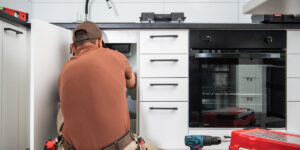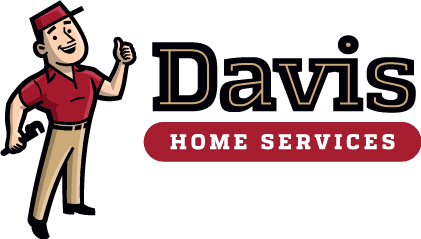How To Clear a Main Sewer Line Clog: Steps Done By Professionals
 Davis Home Services, a team of dedicated Cherry Hill licensed plumbers, wants you to know how to clear a main sewer line clog. Have you ever had the experience of sewage backing up into your kitchen sink or shower drain? Have you tried to flush the toilet only to have wastewater pour all over your floor?
Davis Home Services, a team of dedicated Cherry Hill licensed plumbers, wants you to know how to clear a main sewer line clog. Have you ever had the experience of sewage backing up into your kitchen sink or shower drain? Have you tried to flush the toilet only to have wastewater pour all over your floor?
With these professional tips, you won’t have to worry about how to clean a main sewer line clog anymore. In some cases, you might be able to fix clogs yourself using a plumbing snake. For more stubborn clogs, you might need specialized tools and a professional plumber to solve the problem.
Causes of Sewer Line Clogs
Sewer lines can clog for many reasons. A common obstruction is a collection of fat and oil that congeals in the pipes. Other materials, such as wet wipes, are technically flushable but remain in the pipes, entangling other bits of waste and debris.
Some obstructions can be due to natural debris such as leaves, animal dwellings, and tree roots.
Locating Sewer Line Clogs
You might need a professional to identify the blockage. However, this simple trick can help you to locate the blockage. If only one of your drains is affected, the blockage is probably in the pipe leading directly from the affected drain.
If every drain in one room is affected, then the blockage is further along after those pipes have merged. If a blockage affects every drain and toilet in your house and the toilets, then you are dealing with a blockage of the main sewer line.
How To Clear a Main Sewer Line Clog
It is generally not a good idea to use harsh drain cleaners to fix a clogged sewer line. Chemicals can be corrosive and eventually eat away at the pipe, causing even more serious problems. Gentler chemicals like baking soda and vinegar, followed by hot water, could remove clogs safely.
If simple home remedies don’t work, it’s time to break out professional plumbing tools. Knowing how to clear a main sewer line clog as soon as you spot it can save you thousands of dollars on repair costs later on.
Technique 1: Using a Plumbing Snake or Auger
What Is a Plumbing Snake?
A plumbing snake is a handy tool for mechanically breaking up obstructions. As its name suggests, it is long and thin. The head of the snake turns like a screw to dig into clogs and break them apart.
Plumbing snakes are usually about fifty feet long, so they can reach obstructions that are far from your access point.
What Is an Auger?
An auger is similar to a snake but designed for thicker pipes. An auger could be more effective at powering through larger clogs. The instructions for snakes and augers are essentially the same but check the manufacturer’s instructions before using them.
Finding the Cleanout Fitting
The first step in using a snake is accessing the sewer line. Houses typically have a cleanout fitting. The cleanout is essentially a covered access point for the sewer system.
It is often on or around the first floor of your house, usually near a bathroom.
Opening the Cleanout Fitting
Once you find the cleanout fitting, you’ll open it with a wrench and insert the snake. Be prepared for the possibility of sewage pouring out of the cleanout when you open in. To protect yourself and the surroundings from any sewage, don’t take the cap off all the way.
Inserting the Snake or Auger
Insert the snake or auger as far as you can. Turn the handle to rotate the head of the snake or auger. This helps to break down clogs.
When you are finished, pull the snake out and flush with water.
Tidying Up
Before you remove the snake or auger, clean it off with water. Once you have unclogged the drains, be sure to replace the cover and tighten it with the wrench.
If the snake or auger did not work, professional plumbers have other tools at their disposal.
Technique 2: Hydro Jetting
Compressed jets of water are effective at removing dirt and grime from surfaces. A plumber using hydro jetting is essentially power washing the clog out of your pipes. The plumber inserts a hose into the pipes and blasts water through until the clog clears.
If you have damaged or leaky pipes, hydro jetting could break these pipes and cause water to jet from the broken pipes into the soil or, worse, into your home. The plumber should make sure that the pipes leading from the cleanout fitting to the clog are not damaged.
Snaking, augering, and hydro jetting won’t get rid of some obstructions, such as encroaching tree roots or rocks. If the plumbers can’t dislodge the obstruction, they might have to cut into the sewer pipe to remove it.
Technique 3: Camera Inspection
If the plumbers can’t find the leak with a snake or dislodge it with water, they can send a camera inside to inspect the pipe. The technology for camera pipe inspection uses the same principle as a colonoscopy or an endoscopic medical procedure.
The camera is at the end of a flexible line that allows it to follow the twists and turns of the pipe. A light mounted on the end of the camera allows the plumbers to see. Once the plumbers have identified the obstruction, they can remove or reroute the blocked section of pipe and restore flow to the sewer line.
Professional Clog Removal by Davis Home Services
Now that you’ve learned how to clear a main sewer line clog, find more plumbing tips coming from real plumbers. Check out our blog or visit our website for more information.
At Davis Home Services, we have the tools and the technical knowledge to root out even the toughest clogs. Sewer backups can be messy, frustrating, and even frightening. If you’re in the Cherry Hill, NJ area, leave the hassle to us. For a free consultation, give us a call at 844-226-9872.

